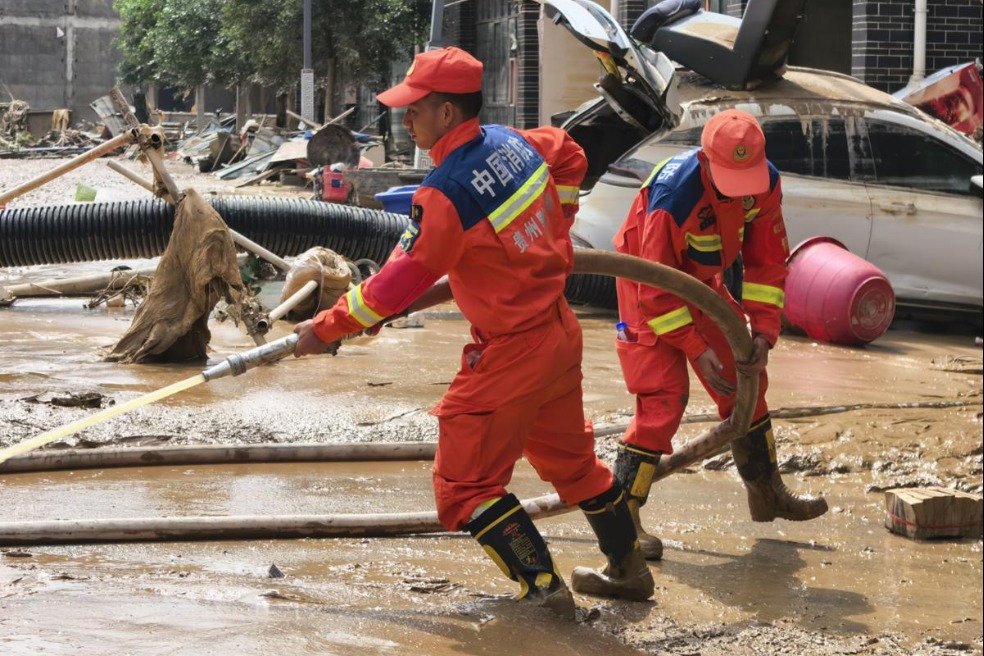Space technology comes right down to Earth


More than 4,000 technologies developed for China's manned space program have been widely applied across a number of sectors. For example, space breeding technology alone has generated more than 200 billion yuan ($30 billion) so far, officials said.
Last month, Hao Chun, director of China's Manned Space Agency, told a news briefing that the nation's manned space program is a great cause that is "both lofty and down to earth". He added that its evolution can drive upgrades of related industries and promote great socioeconomic development.
In the 30 years that China's manned space program has been active, more than 4,000 technological achievements have been widely used, driving innovation in sectors such as raw materials, microelectronics, machinery manufacturing and communications.
For example, the space breeding technology has not only promoted crop improvements, but has also been employed in fields such as food processing and the cultivation of bacteria and biopharmaceuticals. As such, it has generated economic benefits and contributed to food security and environmental protection.
Hao said manned space flight is an activity that features the most complex systems, the most intensive achievements and the most dynamic innovations.
For example, the heat control systems of liquid-propellant rocket engines can be used to upgrade the gasification of pressurized pulverized coal combustion, solve problems related to domestic waste disposal and improve the performance of hydrogen fuel cells.
Moreover, the research and development processes for technologies related to controls, measurements, image processing and other components used in rockets, spacecraft and space stations can promote the upgrading of intelligent industrial control systems.
The heat-resistant base technology of manned spacecraft has been used to make heat insulation materials for civilian use. The recent Winter Olympics in Beijing also adopted a large number of aerospace technologies for use in the opening and closing ceremonies, as well as in athletes' training equipment.
A large number of space technologies have also been adapted for civil use, such as instant food and daily necessities including diapers, while space protein crystallization is being researched to help develop new drugs to treat osteoporosis and muscular dystrophy.
Furthermore, manned space environmental control and life-support technology, and research into microgravity combustion mechanisms and new materials research can also be translated into a range of fields related to livelihoods and deliver more benefits, according to Hao.
"In the future, the Chinese space station will conduct a large number of experiments in space life science, space materials science, microgravity fluid physics and space medicine, which are expected to achieve significant results and breakthroughs in scientific exploration and applied research," he said.
"We believe that these technologies will be adopted more frequently to serve socioeconomic development, the national economy and people's livelihoods."
Space technologies have served daily life throughout the global history of space exploration.
The commercialization of adult diapers was rapidly promoted in the 1960s after NASA astronaut Alan Shepherd reportedly had to urinate in his spacesuit while awaiting the launch of Freedom 7 in 1961.
The air cushion shoe was derived from a process known as "blow rubber molding" used by NASA to create the spacesuit. In 1979, Frank Rudy, a NASA employee, came up with an idea of using this sealed cushioning system as the midsole of shoes and pitched it to Nike Inc.
That pitch resulted in the birth of Nike Air, one of the company's bestselling lines.
Freeze-dried food is also a regular item in diets today, thanks to space technology. In the early days of the United States' manned space program, a key problem was ensuring that the astronauts could be fed while in orbit. As a result, NASA funded research on an array of possible food-preservation techniques.
The freeze-dried technique removed the water content of fruit and vegetables while retaining the nutrients.
The technique not only helped enrich the astronauts' cuisine, but was also applied to daily food storage in the civilian world.
Many more common features of daily life originated in space technologies.
From smoke detectors, computed tomography and magnetic resonance imaging in hospitals to solar panels, sunglasses and bar codes, people are enjoying the convenience brought by these space-based technologies every day.
- Top court establishes special department to protect lawyers' rights
- Beijing ramps up crackdown on drug crimes
- Xinjiang artist's hand-stitched dolls capture regional life
- Power banks without 3C certification banned on domestic flights
- China's green energy solution powers sustainability while combating desertification
- Forum spotlights Beijing as innovation hub for global medtech players





































